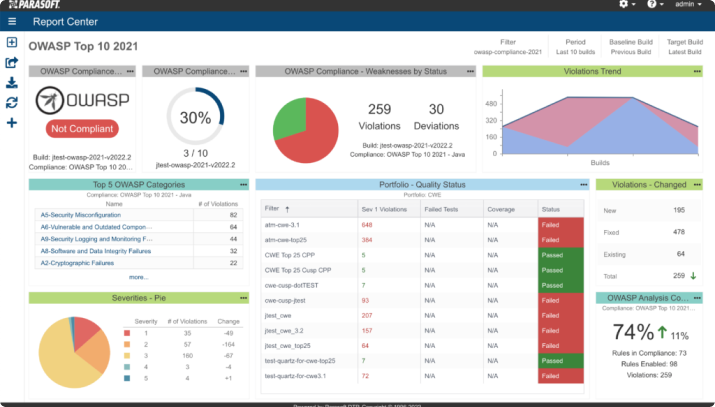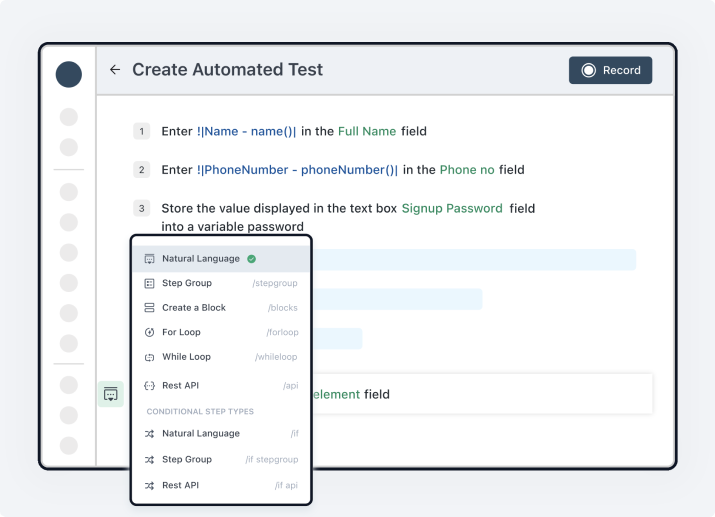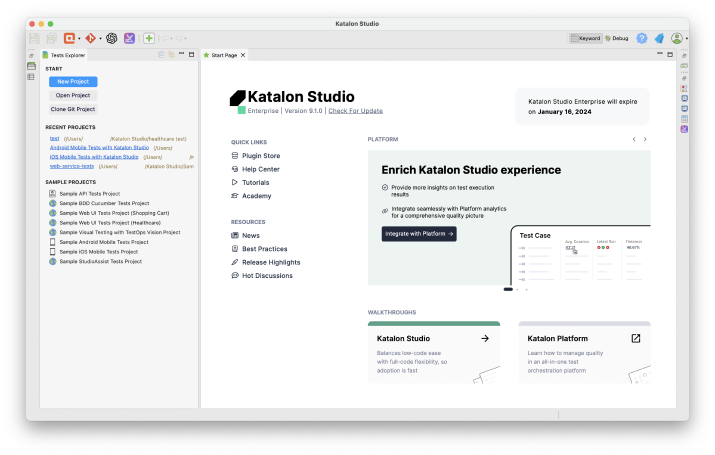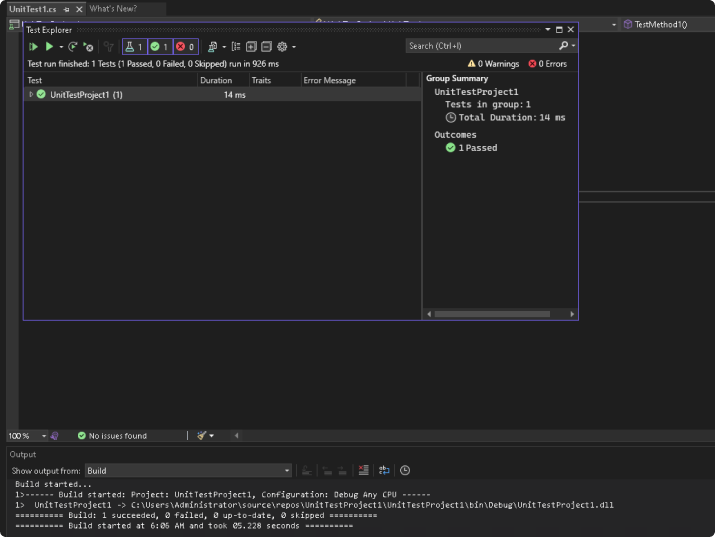AI technologies, in particular coding assistants based on large language models (LLMs), are revolutionizing software testing by introducing automation to a range of new tasks, including generating scripts, creating unit tests, and writing human-readable code explanations.
By automating the generation of test scripts, AI minimizes the manual effort required in scripting and maintaining them. This is especially beneficial in adapting to changes within the application under test, ensuring that the scripts remain relevant and accurate over time. AI can help generate unit tests, automating the validation of individual units of source code and reducing the burden on developers and testers. AI can also enhance knowledge sharing through automated code explanations and documentation.
In traditional software testing, activities such as writing unit tests and maintaining them across different versions of the software require significant manual effort and are prone to human error. AI testing tools introduce automation to these processes, replacing the monotonous and error-prone aspects of manual testing.
Through AI, unit tests can be generated and updated automatically, reflecting changes in the software without the need for manual intervention. This not only speeds up the testing process but also enhances the accuracy and reliability of the tests.
Furthermore, AI-driven testing tools are equipped to handle test maintenance efficiently, updating tests to align with new features or changes in the software. This capacity for automatic adjustment reduces the burden on testers and developers, improves test coverage and ultimately improves software quality with the same testing resources.
Using AI-enabled tools to test software offers the following benefits:
There are several ways that AI can be used to test software.
AI tools can create test scripts from requirements documentation, user stories, or application interfaces. This process reduces the manual effort involved in writing and maintaining test scripts, enabling testers to focus on more complex tasks. Automated scripts are adaptable, updating as applications evolve.
Unit tests validate the smallest parts of an application’s codebase. This ensures each component functions correctly in isolation, facilitating early detection of defects. AI-driven unit test generation analyzes the source code to create relevant test cases, optimizing test coverage and efficiency. This can reduce the huge manual effort most development teams spend on writing unit tests.
AI can be used to run predefined, dynamically generated test cases across different environments and configurations. This automation speeds up the testing process, allowing more extensive testing within shorter periods. AI algorithms optimize test sequences, predict outcomes, and adapt strategies based on results, enhancing test effectiveness.
Self-healing in AI testing refers to the automatic adjustment of test scripts when application changes occur. AI algorithms detect UI or API modifications and update test cases accordingly, reducing maintenance and ensuring tests remain relevant. This capability minimizes testing disruptions, providing consistent feedback despite ongoing development changes.
AI-driven code explanation and documentation tools automate the creation of technical documentation and code comments. This ensures code is easily understandable, facilitating maintenance and updates. Automation of these tasks reduces the technical debt associated with poorly documented code, improving code quality and developer productivity. By generating clear, consistent documentation, AI helps maintain software architecture and design knowledge.

Tabnine is an AI coding assistant tool designed to be a companion, mentor, and helper within your IDE. Tabnine can support software testing among many other development activities. Tabnine assists with software testing by offering predictive suggestions for potential test cases based on the code being written. Request Tabnine to write tests for specific functions or code, Tabnine returns test cases, implementation, and assertions and suggests tests that align with the testing framework and structure already in use in your project.
Key features include:
Try Tabnine for free today or contact us to learn how we can help accelerate your software development.

Tricentis Tosca aims to eliminate common bottlenecks in testing. It is a codeless test automation solution that addresses the end-to-end testing lifecycle.
Key features include:

Source: Tricentis Tosca
While Tricentis Tosca offers a robust solution for test automation, it’s important to consider its limitations (sourced from G2):

Parasoft offers a suite of solutions that aim to accelerate the testing process, helping teams detect and remediate defects as early as possible in the software lifecycle.
Key features include:

Source: Parasoft
Despite its robust features, users have noted several shortcomings of the solution (sourced from G2):

Testsigma is a test automation platform that leverages Natural Language Processing (NLP) and low-code solutions to create automated tests with minimal maintenance. It emphasizes reliability, and scalability, and aims to make quality engineering accessible to teams regardless of their coding expertise.
Key features include:

Source: Testsigma
Despite its innovative approach and powerful features, Testsigma users have identified areas for improvement (sourced from G2):

Katalon’s testing platform aims to increase efficiency, provide clear insights, and streamline the test automation process. Making use of AI across its suite, Katalon helps teams write tests faster and improve quality in complex software environments.
Key features include:

Source: Katalon
While Katalon provides a comprehensive and AI-enhanced testing solution, users have reported some limitations (sourced from G2):
In conclusion, the integration of AI into software testing marks a significant evolution in the field. By automating tasks such as script generation, unit test creation, and code documentation, AI technology not only saves time and resources but also enhances the overall quality and reliability of software products.
The adoption of AI in software testing supports broader development methodologies, such as DevOps, by facilitating continuous testing and rapid feedback loops. As we look to the future, it’s clear that AI will continue to play a central role in shaping the practices and principles of software testing, driving innovation and excellence in software development.
Try Tabnine for free today or contact us to learn how we can help accelerate your software development.
Unit testing is a method of testing that breaks down software into the smallest possible units of code, which are then tested individually for correctness. In the context of C#, a unit would typically be a single method within a class. This method of testing is essential to ensure that each individual piece of your application is performing as expected.
One of the significant benefits of unit testing in C# is that it promotes the creation of modular and independent code. By focusing on testing individual units of code, developers are encouraged to write methods that are self-contained, and thus, easier to manage. Unit tests also serve as a form of documentation, providing insights into how certain methods in your application are intended to behave.
Unit testing is not just about finding bugs early and fixing them. It’s also about design. When you write a unit test, you’re thinking about how it should work and how it can be improved. In essence, unit testing in C# encourages better design principles and leads to more maintainable code.
A test fixture is a set of preconditions or baselines that must be met before a test case can run. In C#, a test fixture might be a class or a method annotated with the [TestFixture] attribute.
Test cases are individual units of testing. They represent a single scenario that the unit of code should be able to handle.
The importance of test fixtures and test cases lies in their repeatability. Once a test fixture is set up, it can be used to run multiple test cases, ensuring that each test case starts with the same initial conditions. This reduces the possibility of tests affecting each other, allowing for more reliable testing.
In unit testing, setup and teardown are two critical concepts. The setup phase is where you prepare the conditions for your test, while the teardown phase is where you clean up after your test. In C#, this is typically done by creating methods annotated with [SetUp] and [TearDown] attributes, respectively.
The setup method runs before each test case and is where you would initialize any objects or variables needed for the test. The teardown method, on the other hand, runs after each test case. This method is used to clean up any resources that were used during the test, ensuring that no unwanted side effects linger after the test is completed.
Data-driven tests are a technique where the test data is separated from the test logic. Instead of hard-coding values into your tests, you can use this technique to feed a variety of data into your tests at runtime.
In C#, you can create data-driven tests using the [TestCase]attribute. This attribute allows you to specify different sets of input for your test method, effectively allowing you to run the same test multiple times with different data. This technique is particularly useful when you want to test a method against a wide range of inputs.
Sometimes, it’s not enough to test that your code works under normal conditions. You also need to test how it behaves when things go wrong. That’s where exception testing comes in. In C#, you can test for expected exceptions using the[ExpectedException] attribute.
This attribute allows you to specify an exception type that you expect your test method to throw. If the method throws the expected exception, then the test passes. If it doesn’t, the test fails. This allows you to ensure that your code is correctly handling error conditions.
MSTest is Microsoft’s unit testing framework for all .NET languages and it comes built in with Visual Studio.
MSTest provides a set of attributes that you can use to define your test fixtures, test cases, setup and teardown methods, and more. It also includes a test runner that you can use to run your tests and view the results. The framework is straightforward to use and integrates seamlessly with Visual Studio, making it a popular choice among C# developers.
In addition to the basics, MSTest also supports more advanced features like data-driven tests, ordered tests, and asynchronous tests, making it a versatile tool for all your unit testing needs.
What are attributes in MSTest?
Attributes are used to control and manipulate how tests are run. They can be applied at the method, class, or assembly level. Here are some of the main attributes you’ll use when unit testing in C#:
TestClass: This attribute is used to denote a class that contains test methods.TestMethod: This attribute is used to mark a method as a unit test method.TestInitialize: Methods marked with this attribute run before each test method in the test class.TestCleanup: Methods marked with this attribute run after each test method in the test class.Here are the basic steps for creating unit tests with the MSTest framework.
If you have Visual Studio installed, you already have MSTest as it comes bundled. However, to create and run tests, you need to create a test project.
To create a new test project, open Visual Studio, click on File > New > Project, type Unit Test into the search box and MSTest Test Project. Name your project and click Create. A new project with a sample test class will automatically be created for you.

Now that we have our environment set up, let’s write our first unit test. In your test class, you can create a new test method with the [TestMethod] attribute above it. This attribute tells MSTest that this is a unit test method.
For instance, if we want to test a method that adds two numbers, our test can be as simple as this:
[TestMethod]
public void Add_TwoNumbers_ReturnsSum()
{
// Arrange
var calculator = new Calculator();
// Act
var result = calculator.Add(2, 3);
// Assert
Assert.AreEqual(5, result);
}
This test checks whether the Add Addin the Calculatorclass returns the correct sum of two numbers.
Once you have written your tests, you can run them to see if your code is working as expected. To run your tests, from the top menu in Visual Studio, click Tests > Test Explorer > Run All. The Test Explorer window will show the progress of the tests and display the results once all tests have been completed.

Each test method is run independently of the others. This isolation ensures that the state of one test cannot affect the outcome of another test. If a test fails, it means that there’s a bug in the code that needs to be fixed.
Assertions are the heart of unit tests. They are used to verify that the result of a test is as expected. MSTest provides a wide range of assertion methods in the Assertclass.
For example, Assert.AreEqual(expected, actual)verifies that two specified values are equal. If they’re not, the test fails. Assert.IsTrue(condition)verifies that a specified condition is true. If it’s not, the test fails. There are many more assertion methods available in MSTest, each designed for specific types of assertions. Mastering these assertions is key to writing effective unit tests in C#.
Tabnine is the AI coding assistant that helps development teams of every size use AI to accelerate and simplify the software development process without sacrificing privacy, security, or compliance. Tabnine boosts engineering velocity, code quality, and developer happiness by automating the coding workflow through AI tools customized to your team. Tabnine supports more than one million developers across companies in every industry.
Tabnine Chat can help with every stage of development, right in your IDE:
Unlike generic coding assistants, Tabnine is the AI that you control:
It’s private. You choose where and how to deploy Tabnine (SaaS, VPC, or on-premises) to maximize control over your intellectual property. Rest easy knowing that Tabnine never stores or shares your company’s code.
It’s personalized. Tabnine delivers an optimized experience for each development team. It’s context-aware and can be tuned to recommend based on your standards. You can also create a bespoke model trained on your codebases.
It’s protected. Tabnine is built with enterprise-grade security and compliance at its core. It’s trained exclusively on open source code with permissive licenses, ensuring that our customers are never exposed to legal liability.
Watch this video to learn more:
Get started with Tabnine for free today, or contact us to learn how we can help your engineering team be happier and more productive.
Tabnine is proud to announce our participation as a launch partner for Atlassian’s soon-to-be-released AI integrations, dubbed Atlassian Rovo, previewed today at Atlassian Team 2024. Once available, these new integrations will allow Tabnine’s customers to leverage the complete body of information — the content and code that represents deep institutional knowledge — that’s captured across Atlassian’s suite of products. Additionally, Tabnine’s first-to-market AI coding assistant will be embedded within the Atlassian product suite as an AI agent to provide our full scope of capabilities anywhere asoftware development team works.
We’re excited about what the future holds. Atlassian opening their products to be better accessed by AI-powered software development tools, along with Tabnine’s deep expertise as the originator in the coding assistance space, will further accelerate and simplify our joint customers’ software development effort. And as an embedded agent, Atlassian customers will benefit from Tabnine’s ability to generate code, fixes, tests, and documentation with full awareness of their codebase and software development practices.
We’re also working on expanding our integrations with Atlassian products, and a few days ago provided a glimpse of what’s coming soon: an AI agent that can take simple specifications stored in Atlassian Jira and create a fully functioning application.
But you don’t need to wait for tomorrow: Tabnine and Atlassian are already working together to make engineering teams more successful. Read on to learn more.
Tabnine has a long-established relationship with Atlassian. Tabnine is not only an Atlassian Ventures-backed company but is also a long-time Atlassian customer.
Over the years, we’ve built deep integrations with Atlassian’s products. Tabnine customers already use our connections to Atlassian’s products to get more personalized AI assistance using the context derived from accessing the information in Atlassian products.
By design, the LLMs that are integral to every AI coding assistant are universal. Even though they are trained on vast amounts of data and contain billions of parameters, they’re not aware of the specific code and distinctive patterns of an individual organization. As a result, their recommendations, even though accurate, are quite generic and not tailored to the needs of a developer. To increase the effectiveness of AI coding assistants, it’s imperative to provide contextual awareness to the LLMs so that they can understand the subtle nuances that make a developer and organization unique.
Retrieval-augmented generation (RAG) is a technique that’s widely used in the industry to provide context to coding assistants. RAG not only reduces LLM hallucinations but also helps to overcome the inherent limitations of training data. Tabnine uses RAG and other advanced techniques to leverage your codebase and knowledge to make our AI coding assistant align with how you work and provide more accurate and highly personalized results.
Here’s how you can use Tabnine with Atlassian’s products today:
Context through local code awareness: Tabnine integrates with Atlassian Bitbucket (alongside other leading Git-based repositories like GitHub and GitLab). Start by checking out the branch from Bitbucket from the Jira issue you’ve been assigned and open the project in your IDE. Tabnine then accesses the locally available data in your IDE, including variable types used near the completion point in the code, comments you’ve added, open files you’ve interacted with, imported packages and libraries, and open projects. Tabnine automatically identifies the relevant information and uses it as context to provide personalized results. We’ve seen that personalized AI recommendations based on awareness of a developer’s IDE are accepted 40% more often than AI suggestions generated without these integrations.
Connection to your Bitbucket repository for global code awareness: Often the most valuable context for an engineering team typically exists beyond just what’s available in the developer’s IDE. This is especially true for enterprises where teams of hundreds of developers work cross-functionally to build software. Tabnine administrators can connect Tabnine to their organization’s Bitbucket repositories (alongside any other Git-based tools like GitHub or GitLab) to significantly increase the context and get highly personalized results when completing code, explaining code, creating tests, writing documentation, and more. In addition, this connection allows a developer to use plain language queries to better understand an existing codebase, to find code that serves specific functions or leverages specific APIs, and to identify code that can be reused on their project. This capability is currently in Private Preview for Tabnine Enterprise customers. Check out the video below to see the integration between Tabnine and Bitbucket in action:
Customization of AI models: Building on the personalization of the AI assistant through context and connection, Tabnine offers model customization to further enrich the capability and quality of the output. We use your codebase stored in Bitbucket to fine-tune the proprietary models that we custom-built for software development teams. Leveraging your codebase to extend Tabnine’s existing models results in higher performance in common software development tasks and dramatically improves the quality of code generated for companies that use less common programming languages or frameworks.
Want to see how Atlassian + Tabnine can help your engineering team be more productive? Reach out to schedule a chat with one of our product experts. If you happen to be in Las Vegas at Team 2024 this week, stop by Booth #68 to learn more about these capabilities. Or to try it out for yourself right now, sign up for Tabnine Pro today — it’s free for 90 days.